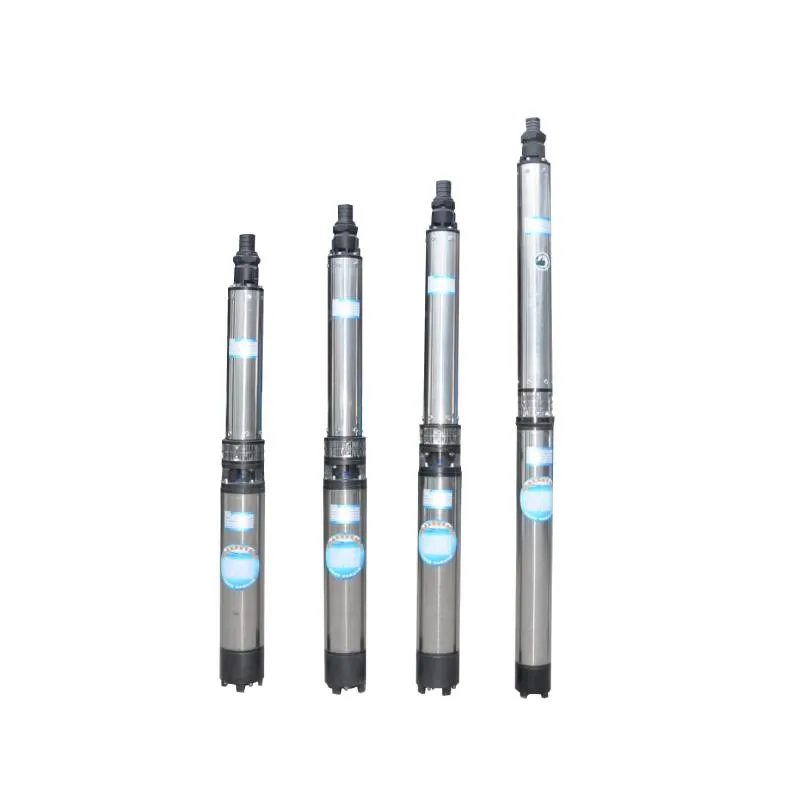Nov . 08, 2024 22:38 Back to list
Determining the Ideal Depth for Submersible Well Pump Installation
How Deep to Put a Submersible Well Pump A Comprehensive Guide
Submersible well pumps are a popular choice for extracting water from deep underground sources. They are designed to operate underwater, which helps avoid issues like cavitation and increases efficiency. However, determining how deep to install a submersible well pump can be a complex task, influenced by various factors including the well’s depth, water table levels, and the specifications of the pump itself. In this article, we will explore these factors in detail to help you make an informed decision.
Understanding Well Depth and Water Table
The first consideration when determining the depth of a submersible well pump is the depth of the well itself. Wells can vary significantly in depth, ranging from a few dozen feet to several hundred feet. Before installing a pump, it's essential to measure the static water level, which is the level of groundwater when the pump is not in operation. This can be achieved by using a measuring tape or a weighted rope to gauge the distance from the wellhead to the water's surface.
Additionally, during periods of heavy use or drought, the water level may fluctuate. Knowing the lowest expected water level, also called the dynamic water level, is crucial. A good practice is to install the pump at least 10 to 20 feet below the static water level. This ensures that the pump remains submerged even during times of reduced water availability, protecting it from damage and cavitation.
Pump Specifications and Design
Submersible pumps come in various designs and specifications, making it vital to choose a model that suits your well's unique characteristics. Each pump has a rated capacity, often measured in gallons per minute (GPM), and a maximum lift height, which is the maximum depth from which it can effectively draw water. When selecting a pump, consult the manufacturer's guidelines to understand the optimal installation depth for your specific model.
how deep to put submersible well pump

Moreover, consider the pump's construction material, typically stainless steel or thermoplastic. Stainless steel pumps are generally more durable and resistant to corrosion, especially in acidic waters, which is something to keep in mind if your well has challenging water conditions.
The Role of Pipe Thickness and Diameter
The thickness and diameter of the well casing also play a crucial role in determining how deep your submersible pump should be placed. The casing is the protective tube that lines the bore of the well, preventing soil and rock from collapsing into it. A wider casing allows for higher flow rates and can help support the pump at greater depths.
The pump should be installed within the well casing, taking care not to exceed the rated limits of both the pump and casing materials. Ensure that the piping used is adequately sized to carry the water from the pump to the surface without causing pressure loss, which can further influence the effective depth of installation.
Additional Considerations
Lastly, local regulations and codes regarding well water systems may dictate specific installation standards. Always check with local authorities or a licensed well driller before proceeding with installation. They can provide valuable insights into best practices for your region, particularly concerning water conservation and environmental protection.
In summary, determining how deep to put a submersible well pump requires careful consideration of various factors, including the well’s depth, static and dynamic water levels, pump specifications, casing dimensions, and local regulations. Proper installation not only maximizes the pump's efficiency but also extends its lifespan. If in doubt, it's always advisable to consult with a professional to ensure the best outcome for your well water system. By following these guidelines, you can ensure that your submersible well pump operates effectively and reliably for years to come.
-
Submersible Water Pump: The Efficient 'Power Pioneer' of the Underwater World
NewsJul.01,2025
-
Submersible Pond Pump: The Hidden Guardian of Water Landscape Ecology
NewsJul.01,2025
-
Stainless Well Pump: A Reliable and Durable Pumping Main Force
NewsJul.01,2025
-
Stainless Steel Submersible Pump: An Efficient and Versatile Tool for Underwater Operations
NewsJul.01,2025
-
Deep Well Submersible Pump: An Efficient 'Sucker' of Groundwater Sources
NewsJul.01,2025
-
Deep Water Well Pump: An Efficient 'Sucker' of Groundwater Sources
NewsJul.01,2025
-
 Submersible Water Pump: The Efficient 'Power Pioneer' of the Underwater WorldIn the field of hydraulic equipment, the Submersible Water Pump has become the core equipment for underwater operations and water resource transportation due to its unique design and excellent performance.Detail
Submersible Water Pump: The Efficient 'Power Pioneer' of the Underwater WorldIn the field of hydraulic equipment, the Submersible Water Pump has become the core equipment for underwater operations and water resource transportation due to its unique design and excellent performance.Detail -
 Submersible Pond Pump: The Hidden Guardian of Water Landscape EcologyIn courtyard landscapes, ecological ponds, and even small-scale water conservancy projects, there is a silent yet indispensable equipment - the Submersible Pond Pump.Detail
Submersible Pond Pump: The Hidden Guardian of Water Landscape EcologyIn courtyard landscapes, ecological ponds, and even small-scale water conservancy projects, there is a silent yet indispensable equipment - the Submersible Pond Pump.Detail -
 Stainless Well Pump: A Reliable and Durable Pumping Main ForceIn the field of water resource transportation, Stainless Well Pump has become the core equipment for various pumping scenarios with its excellent performance and reliable quality.Detail
Stainless Well Pump: A Reliable and Durable Pumping Main ForceIn the field of water resource transportation, Stainless Well Pump has become the core equipment for various pumping scenarios with its excellent performance and reliable quality.Detail
